A Studio in a Barn
By Al R. Young
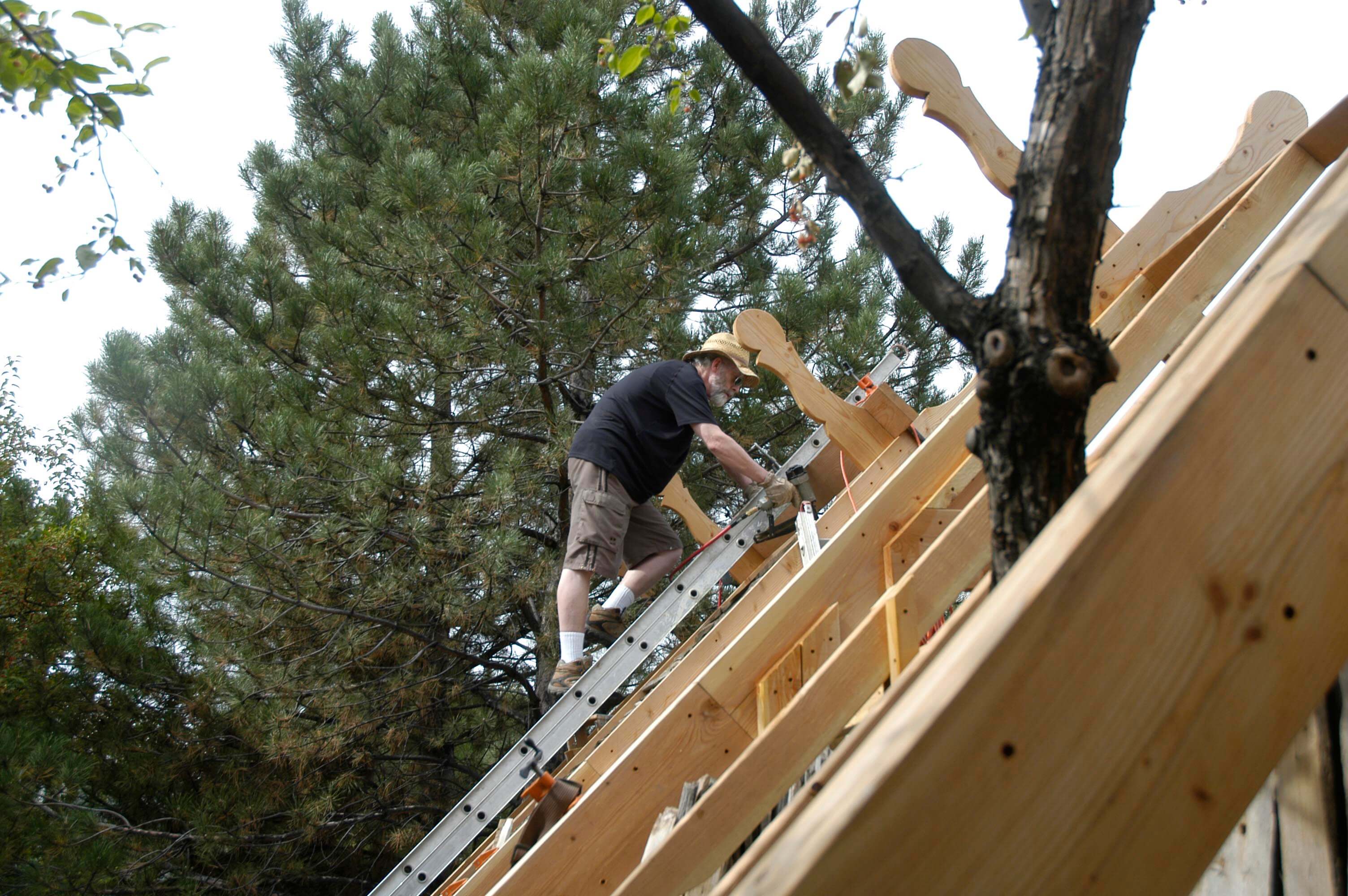
supplemental material
to a series of workshops articles appearing in the following issues of the storybook home journal
to a series of workshops articles appearing in the following issues of the storybook home journal
introduction
Gifts are often something new or, if not new, at least valuable because of sentiment or significance. Unprepossessing as it looked when the salvage of a 48-year-old fence was delivered to our driveway in the summer of 2014, it was indeed a gift, in every sense of the word. A long-time and discerning friend of ours guessed that of all the people to whom such salvage might be received as a treasure, we were most likely to give it a good home.
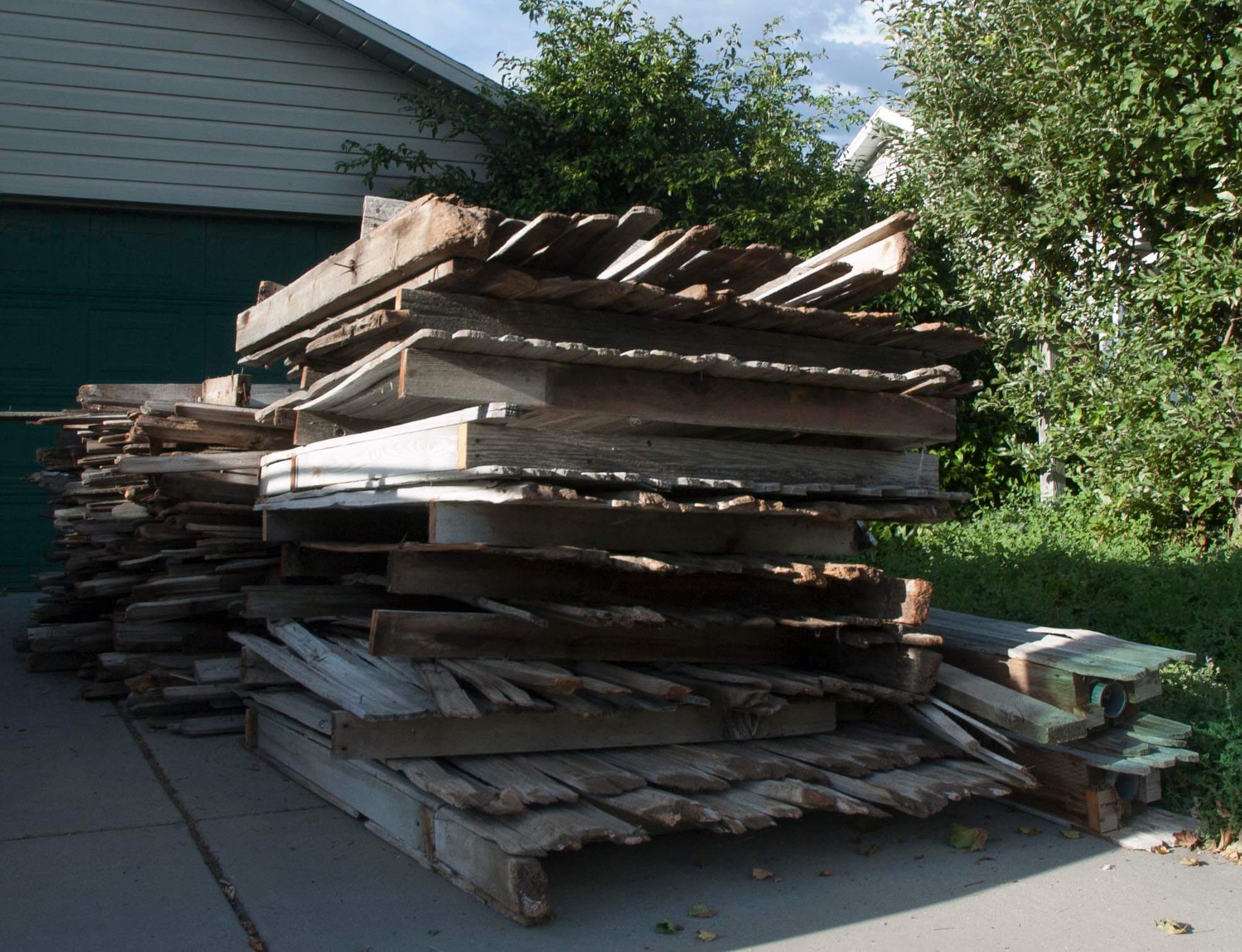 |
| Strictly speaking, the first steps in constructing the barn involved dismantling these fence sections, removing fasteners, washing the grape-stakes, and sorting the boards according to kind and soundness, so that construction might proceed in as safe and orderly a fashion as possible. |
The following before-photograph shows the area where the barn is now situated. Our original plan for dealing with the view of the neighboring fence in the left of the photograph, was to plant silver lace vines and a climbing rose to turn the fence into a wall of plant material; nevertheless, despite our best efforts to nurse the silver lace through transplant shock and acclimation, only the climbing rose (near the corner of the fences in the back of the photograph) survived.
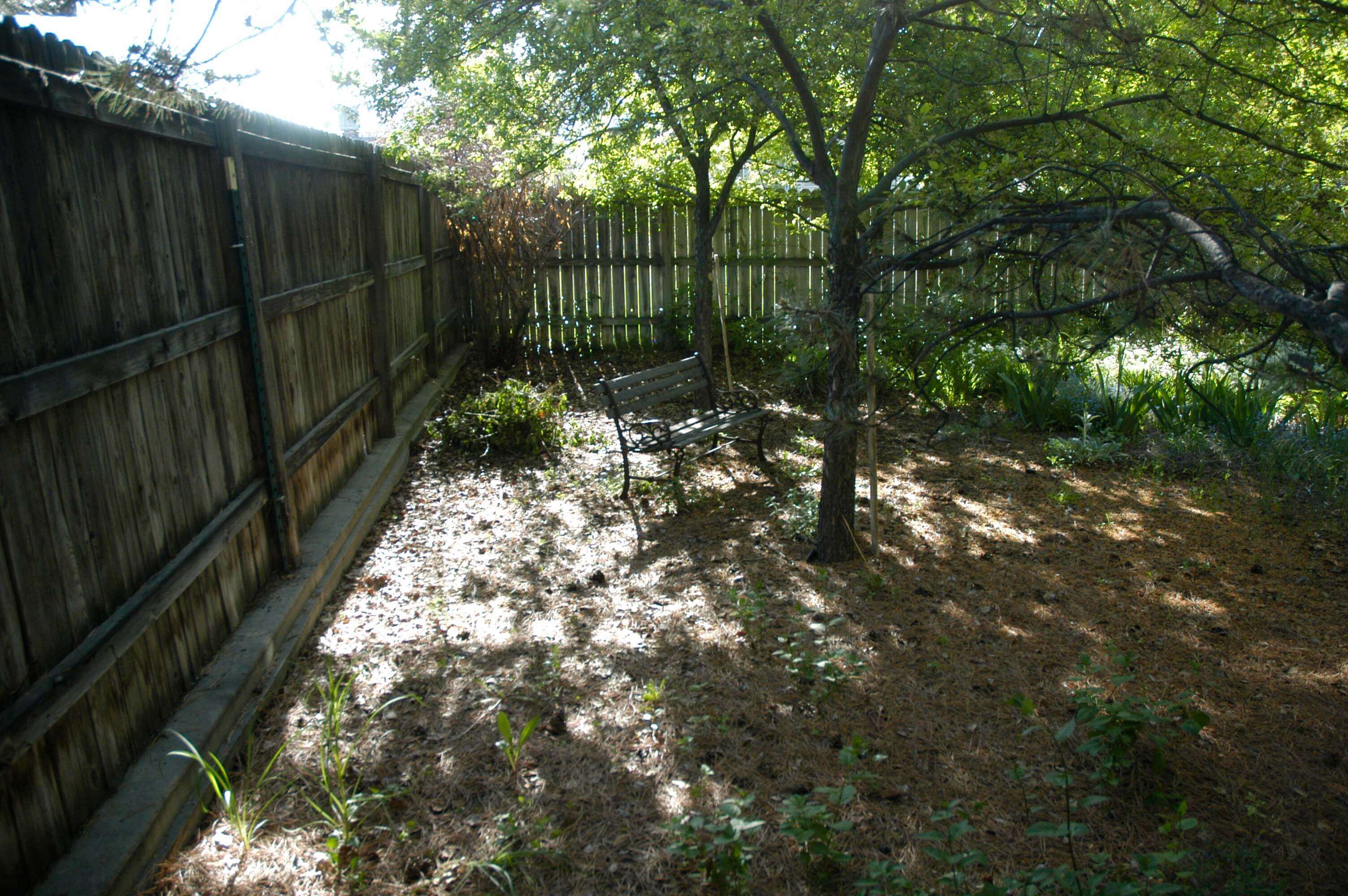 |
| This photograph was taken in May 2014. |
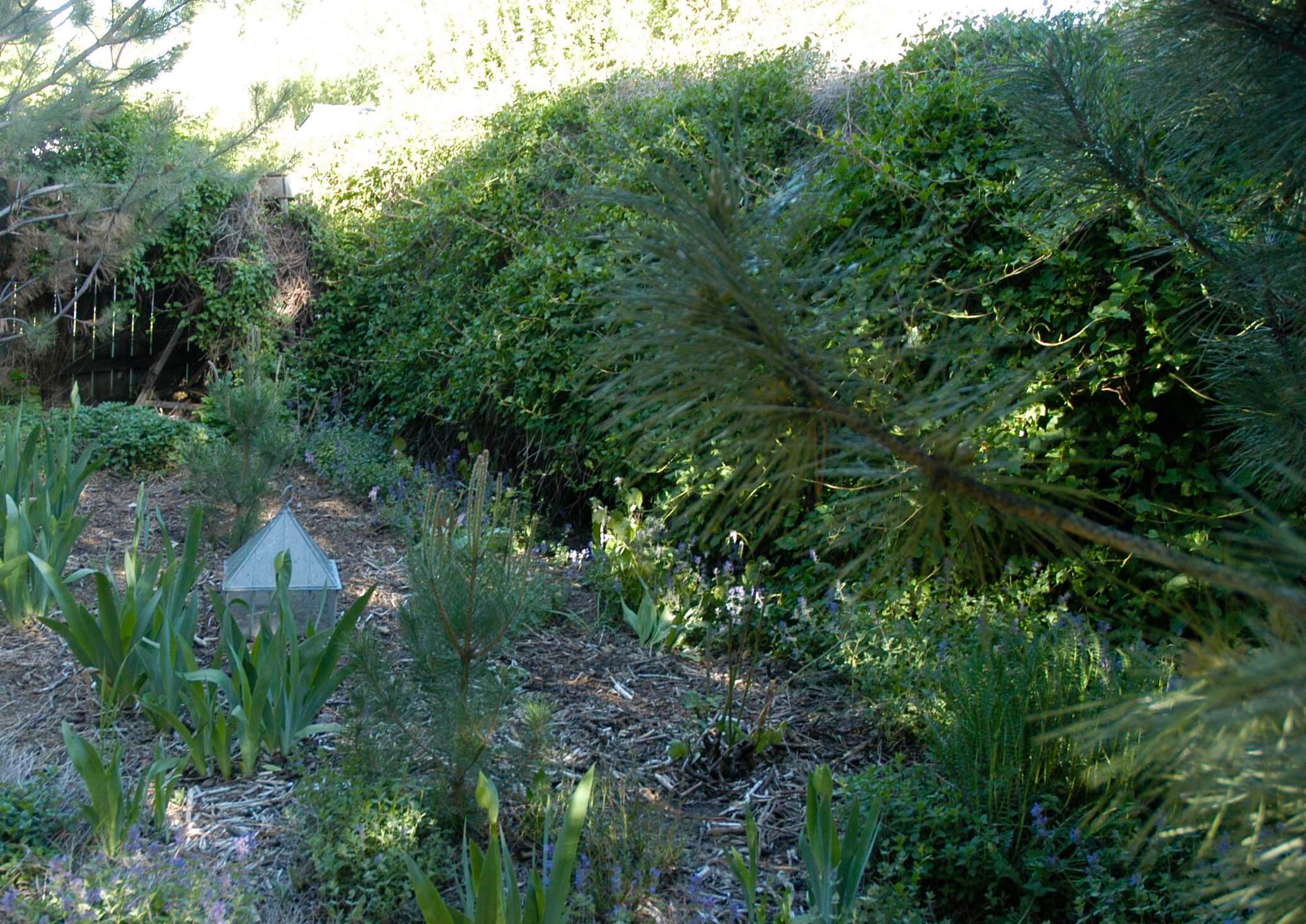 |
| This photograph, also taken in May 2014, shows the silver lace planted on the other side of the pine trees (opposite the area appearing in the foregoing photograph) and along the same section of fence appearing in the foregoing photograph. These silver lace vines were planted at the same time, live in the same micro-climate, and received the same care. We finally concluded that soil conditions in the eastern section could not sustain plant material. |
The dwarf trees in the before photograph grew to maturity and softened the view, but they did not entirely block our view of the fence. And during winter months, the shedding of their leaves was even less effective in screening other aspects of the view. Also as part of our original approach to the garden, we installed a landscape fabric, weed-control barrier on top of which we spread bark chips. This worked well enough for several years, but the natural accumulation of debris from both the crab apple trees and the adjacent pine trees started providing enough of a layering of organic material to sustain plants that germinated and took root in the accumulation. These and many other considerations described in the introductory article in this series combined to make construction of an outdoor structure the most realistic long-term approach to this part of the garden.
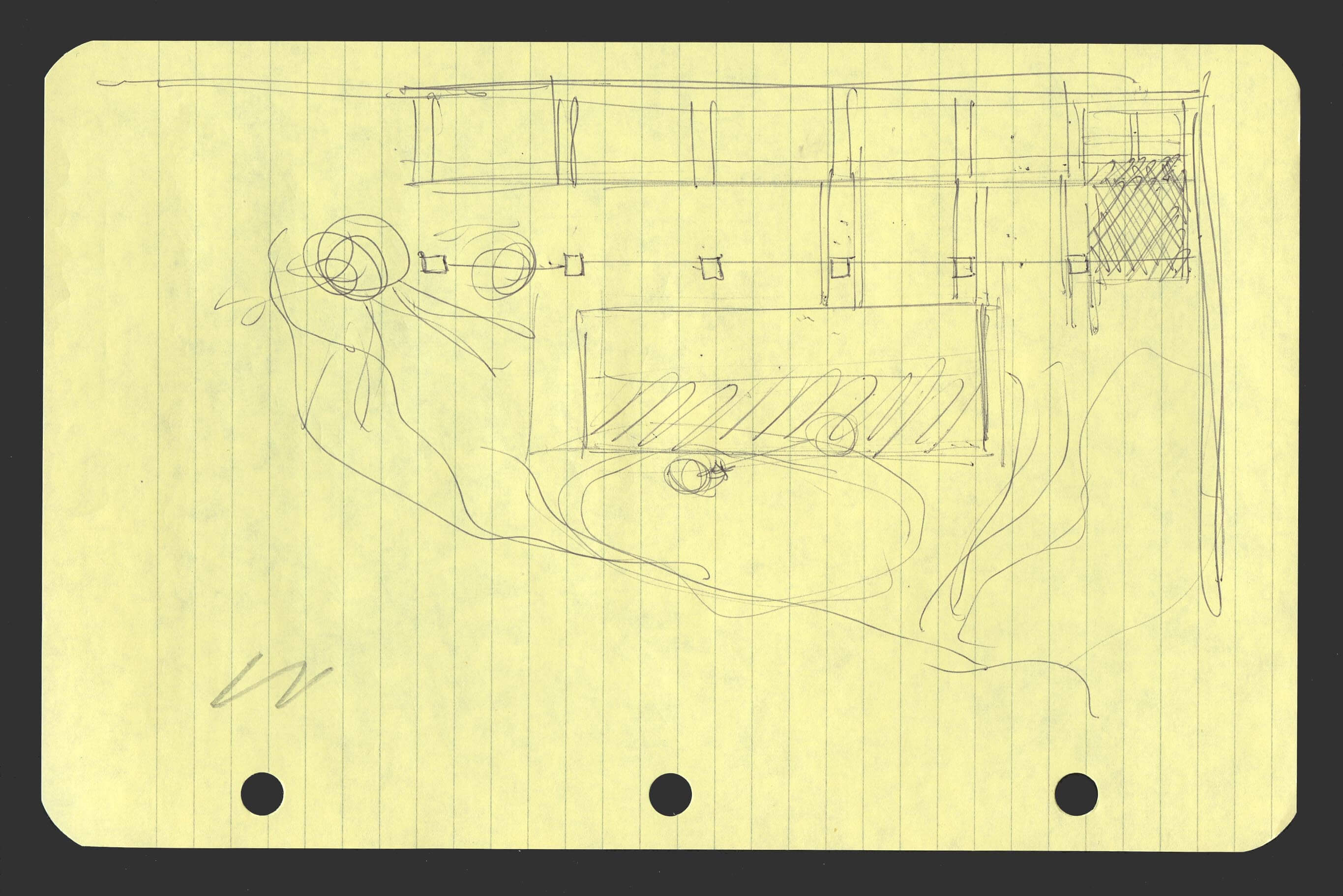 |
| Concept sketch for placement of the barn. At the top of the sketch and to the left, a pine tree stands at the southwest corner of the structure. The eastern-most section has an open roof on the north side to accommodate the climbing rose planted there more than twenty years ago. The small rectangle, on the south side of the barn, became a berry patch surrounded by a low, woven border fashioned from limbs pruned from trees in the garden. See "An Interlacing of Sticks" in At Grassmere, Vol. 15 No. 3 of The Storybook Home Journal. |
walls
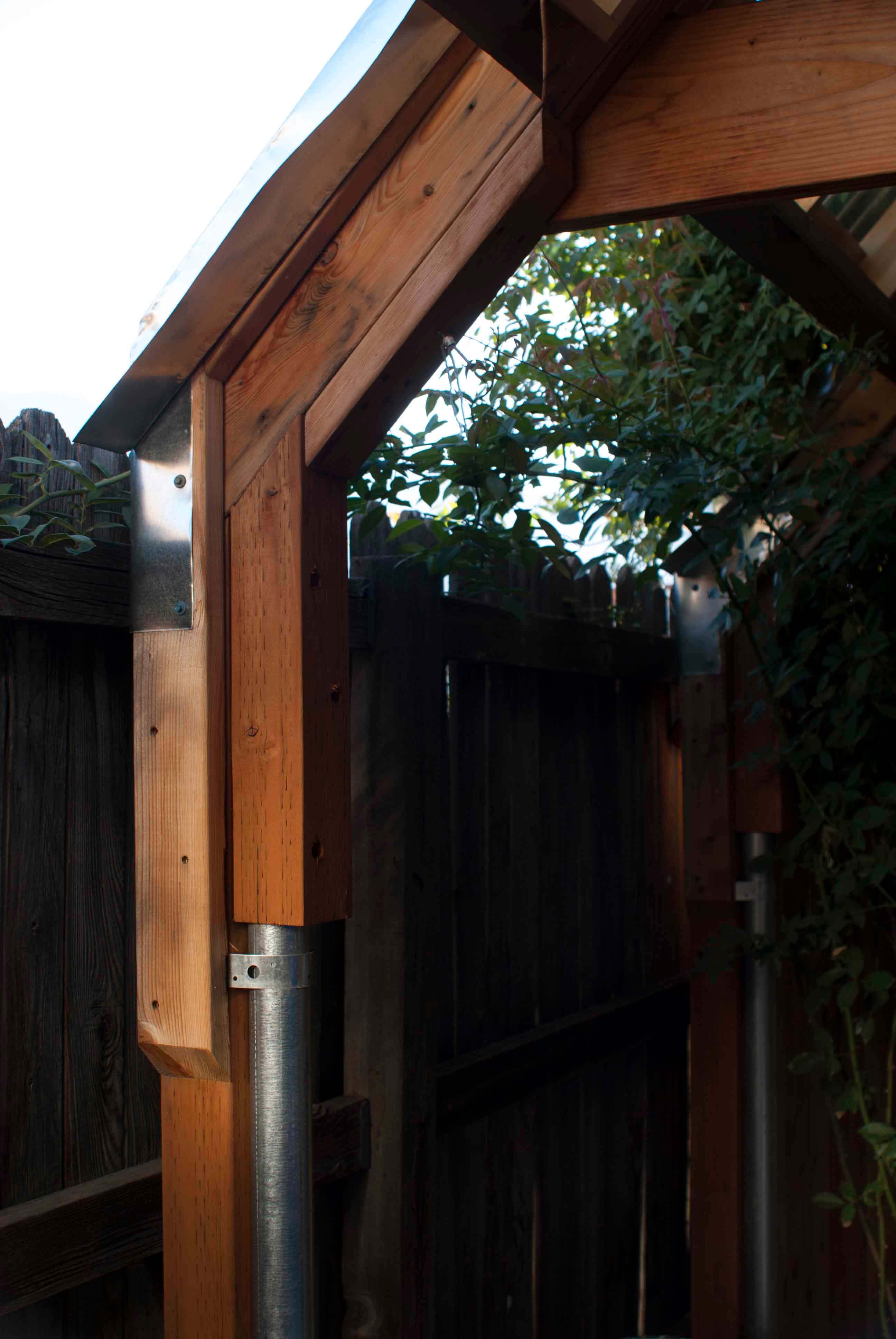 |
| Post construction along the north wall of the barn is diagrammed and explained in At Home for Christmas, Vol. 18 No. 1 of The Storybook Home Journal. |
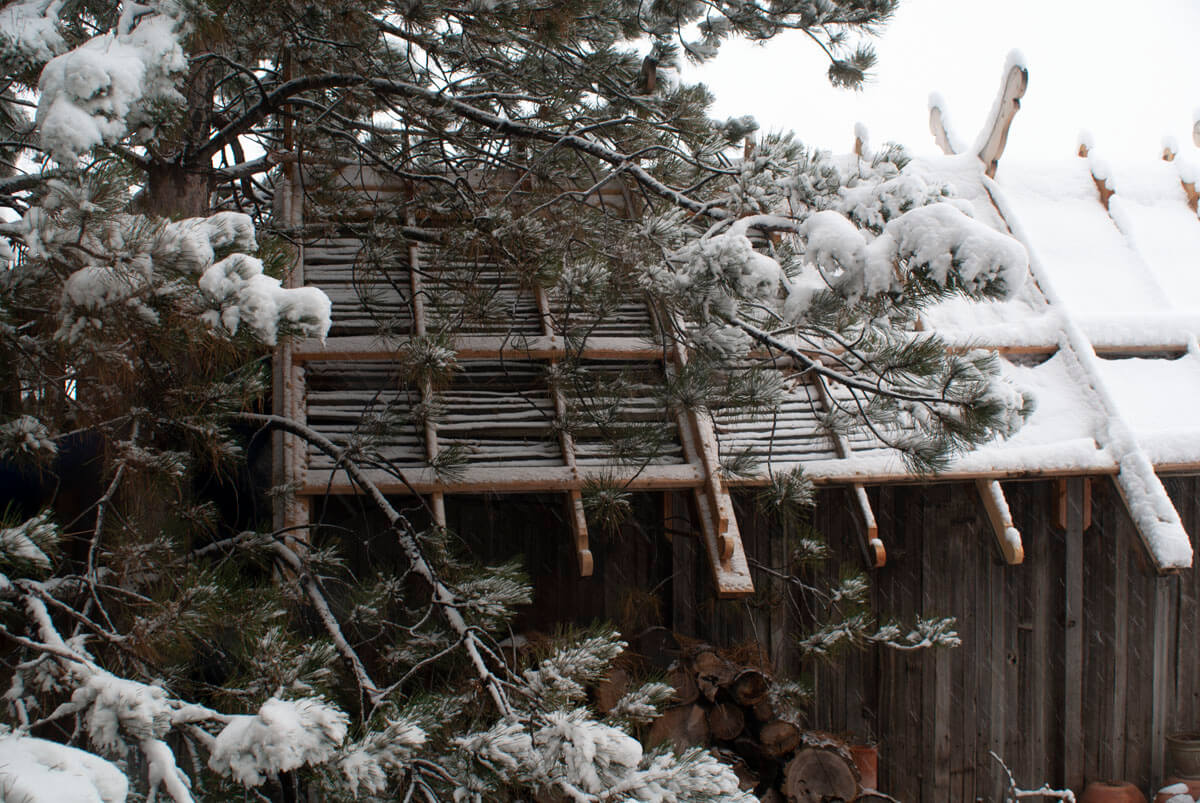 |
| Roof construction is summarized and ornamentation patterns are provided in The Scarlet Pimpernel, Vol. 18 No. 2 of The Storybook Home Journal. |
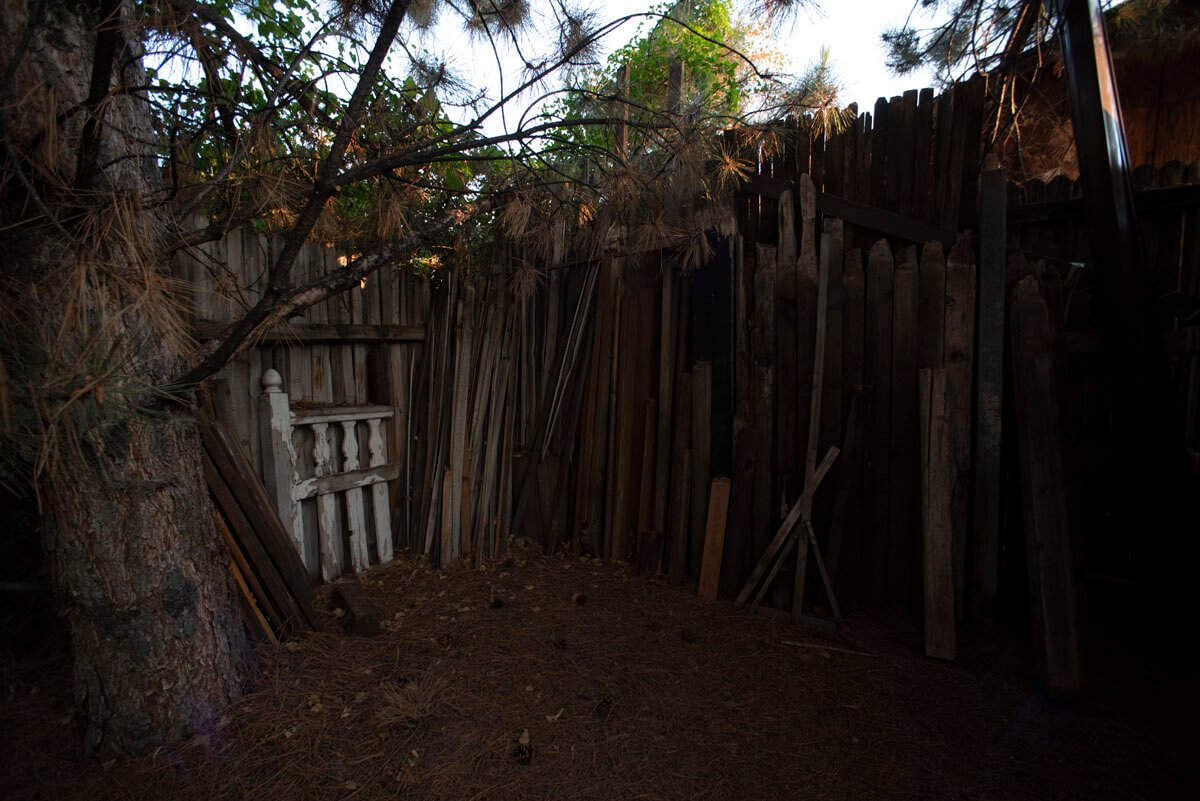 |
| The enclosure on the west side of the barn is home to our lumber yard of weathered wood, used for everything from rustic decor to frames for original oil paintings. |
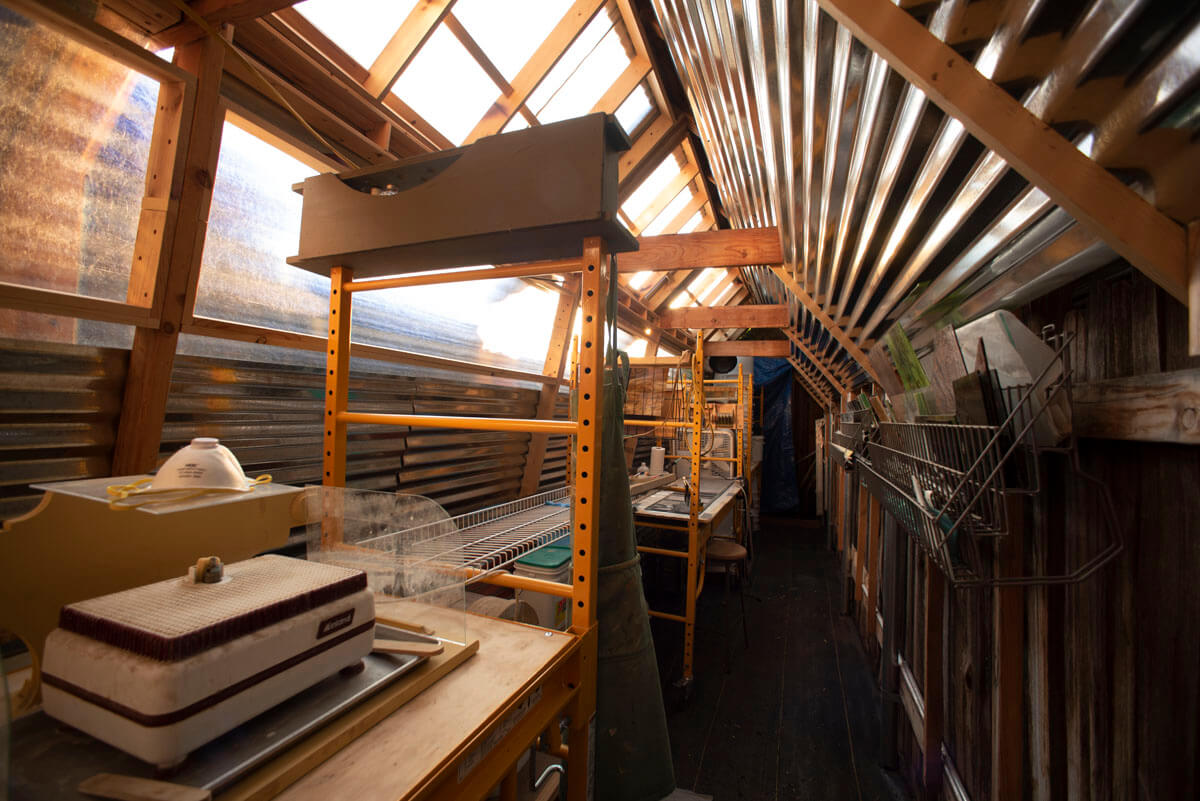 |
| The interior of the barn differs greatly from the structure's old world exterior because the interior serves as a studio for stained glass, ceramics, and custom framing. The floor is landscape cloth, pinned to ground that has been scraped clean and leveled. The plexiglass roof at left faces north, providing light from above the work areas on and in between the sections of portable scaffolding. None of the barn furnishings is built-in. Everything is on wheels so that the entire floor can be conveniently cleared or reconfigured whenever a project requires it. At right, the corrugated sheet metal serves as the waterproof roof under the outer roof, which is made of grapestake for charm instead of waterproofing. |
Tags: 2017, Project commentaries, Workshops
Browse articles by year: 2026 . 2025 . 2024 . 2023 . 2022 . 2021 . 2020 . 2019 . 2018 . 2017 . 2016 . 2015 . 2014 . 2013 . 2012 . 2011 . 2010 . 2009 . 2008 . 2007 . 2006 . 2005 . 2004 . 2003 . 2002 . 2001 . 2000 . 1999 . 1998 . 1997 . 1996
Browse articles by topic: Art lessons . BenHaven Archives . Blank art diaries . Fine art photography . Framing . Illustration . Inspiration and creativity . Isles of Rune . Limited Editions Collection . My Fathers Captivity . News . Novellas . Oil paintings and prints . Operations announcements . Orders and shipping . Overview . Portfolios . The Papers of Seymore Wainscott . Project commentaries . Recipes by Nancy Young . Recommended reading . Recommended viewing . Temple artworks . The Storybook Home Journal . Tips and techniques . Tools supplies and operations
Browse articles by topic: Art lessons . BenHaven Archives . Blank art diaries . Fine art photography . Framing . Illustration . Inspiration and creativity . Isles of Rune . Limited Editions Collection . My Fathers Captivity . News . Novellas . Oil paintings and prints . Operations announcements . Orders and shipping . Overview . Portfolios . The Papers of Seymore Wainscott . Project commentaries . Recipes by Nancy Young . Recommended reading . Recommended viewing . Temple artworks . The Storybook Home Journal . Tips and techniques . Tools supplies and operations